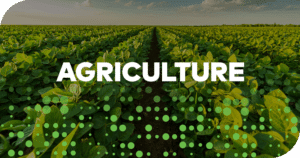The Role of Weather—and Weather Forecasting—in Agriculture

Most people know that the weather has a significant impact on the agriculture industry. Indeed, crops need the basics of moisture, warmth, and sun to thrive. But what’s less obvious is how the details of weather information can drive a grower’s business decisions, helping them to plan efficiently, minimize costs and maximize yields—and profits—as a result.
While farmers must make many day-to-day decisions related to weather conditions, there are four primary areas of farming that are fundamentally affected impacted by weather:
- Crop Growth/Irrigation: Crop growth, or crop yield, requires appropriate amounts of moisture, light, and temperature. Detailed and accurate historical, real-time and forecast weather information can help farmers better understand and track the growth status/stage to make informed decisions. Having access to this data can guide farmers in making significant and potentially costly decisions, such as whether, when and how much to irrigate.
- Fertilizer Timing and Delivery: One of the many decisions that farmers have to make is determining the proper time to apply fertilizer, as well as the application rate and fertilizer form to use. A misapplied application caused by weather can wipe away the entire field’s profits. Weather forecasts can be used to ensure that fertilizer is applied in the right conditions—when it’s dry enough so that it doesn’t wash away (which would create a waste of resources and money) but moist enough so that it gets worked into the soil.
- Pest and Disease Control: Certain weather conditions encourage the development and growth of pests and diseases, which can destroy crops. Forecast guidance incorporated into pest and disease modeling can help determine whether—and when—it’s appropriate to apply pest or disease controls. Wind forecasts also play a role in this decision, as crop dusters, aircraft that spray fungicidal or insecticidal chemicals on plants from above, must be utilized when wind conditions are not apt to cause sprayed chemicals to miss their targets.
- Field Workability: Field workability refers to the availability of days that are suitable for fieldwork. It’s primarily dependent upon soil moisture and soil temperature. Accurate field-level weather information can help farmers assess the workability of their fields and become more efficient in their day-to-day operations.
The cost/benefit equation for having access to reliable weather forecast information is not always easy to quantify, but it’s a decision that’s easy for most large growers and producers to make. Throughout many months, farmers make small but frequent decisions about their crops, and the cumulative effect of the financial implications of those decisions can be significant.
Irrigation planning is a good example. If a farmer relies on a forecast for precipitation that turns out to be accurate, he saves the cost of unnecessary irrigation. And by having a good idea of the expected amount of rain over a period and irrigating just enough to allow crops to thrive, he will maximize yield.
The Role of Weather Forecasting in Precision Agriculture
Weather information is playing an increasingly instrumental role in the evolving field of precision agriculture, a farming practice that emphasizes accuracy and control when it comes to the growing of crops. An essential aspect of this approach is the use of information technology, which includes weather prediction and other items, such as satellite and aerial imagery, GPS guidance, sensors, drones, variable rate fertilizer application, and crop health indicators.
The ultimate goal of precision agriculture is to maximize growth efficiency at the individual seed and plant level. As a “big data” weather provider, DTN is excited to provide hyper-local weather data and knowledge that’s being used to help make this goal a reality.









 Comprehensive weather insights help safeguard your operations and drive confident decisions to make everyday mining operations as safe and efficient as possible.
Comprehensive weather insights help safeguard your operations and drive confident decisions to make everyday mining operations as safe and efficient as possible.